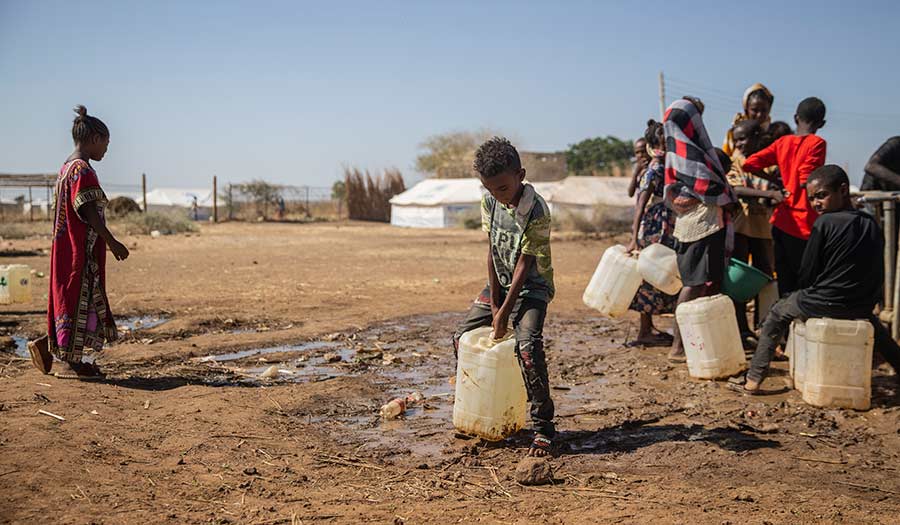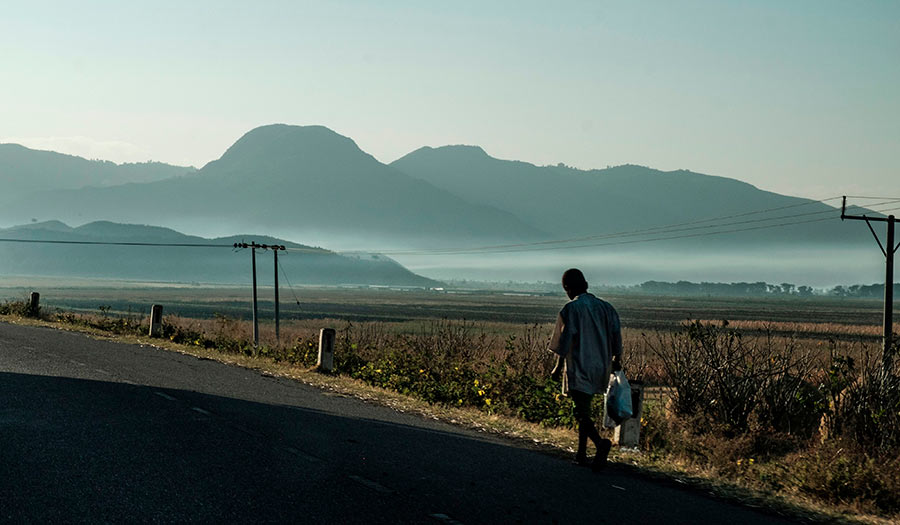 Abdulmonam Eassa/Getty Images
Abdulmonam Eassa/Getty Images
World News Desk
Learn the why behind the headlines.
Subscribe to the Real Truth for FREE news and analysis.
Subscribe NowNAIROBI, Kenya (AP) – From “emaciated” refugees to crops burned on the brink of harvest, starvation threatens the survivors of more than two months of fighting in Ethiopia’s Tigray region.
The first humanitarian workers to arrive after pleading with the Ethiopian government for access describe weakened children dying from diarrhea after drinking from rivers. Shops were looted or depleted weeks ago. A local official told a January 1 crisis meeting of government and aid workers that hungry people had asked for “a single biscuit.”
More than 4.5 million people, nearly the region’s entire population, need emergency food, participants say. At their next meeting on January 8, a Tigray administrator warned that without aid, “hundreds of thousands might starve to death” and some already had, according to minutes obtained by The Associated Press.
“There is an extreme urgent need—I don’t know what more words in English to use—to rapidly scale up the humanitarian response because the population is dying every day as we speak,” Mari Carmen Vinoles, head of the emergency unit for Doctors Without Borders, told AP.
But pockets of fighting, resistance from some officials and sheer destruction stand in the way of a massive food delivery effort. To send 33-pound rations to 4.5 million people would require more than 2,000 trucks, the meeting’s minutes said, while some local responders are reduced to getting around on foot.
The specter of hunger is sensitive in Ethiopia, which transformed into one of the world’s fastest-growing economies in the decades since images of starvation there in the 1980s led to a global outcry. Drought, conflict and government denial contributed to the famine, which swept through Tigray and killed an estimated 1 million people.
The largely agricultural Tigray region of about 5 million people already had a food security problem amid a locust outbreak when Prime Minister Abiy Ahmed on November 4 announced fighting between his forces and those of the defiant regional government. Tigray leaders dominated Ethiopia for almost three decades but were sidelined after Mr. Abiy introduced reforms that won him the Nobel Peace Prize in 2019.
Thousands of people have been killed in the conflict. More than 50,000 have fled into Sudan, where one doctor has said newer arrivals show signs of starvation. Others shelter in rugged terrain. A woman who recently left Tigray described sleeping in caves with people who brought cattle, goats and the grain they had managed to harvest.
“It is a daily reality to hear people dying with the fighting consequences, lack of food,” a letter by the Catholic bishop of Adigrat said this month.
Though Ethiopia’s prime minister declared victory in late November, its military and allied fighters remain active amid the presence of troops from neighboring Eritrea, a bitter enemy of the now-fugitive officials who once led the region.
Fear keeps many people from venturing out. Others flee. Tigray’s new officials say more than 2 million people have been displaced, a number the U.S. government’s Bureau for Humanitarian Assistance calls “staggering.” The UN says the number of people reached with aid is “extremely low.”
In the northern Shire area near Eritrea, which has seen some of the worst fighting, up to 10 percent of the children whose arms were measured met the diagnostic criteria for severe acute malnutrition, with scores of children affected, a UN source said.
Food has been a target. Analyzing satellite imagery of the Shire area, a U.K.-based research group found two warehouse-style structures in the UN World Food Program compound at one refugee camp had been “very specifically destroyed.”
It is challenging to verify events in Tigray as communications links remain poor and almost no journalists are allowed.
“Not being able to travel off main highways, it always poses the question of what’s happening with people still off-limits,” said Panos Navrozidis, Action Against Hunger’s director in Ethiopia.
- World News Desk
- AFRICA
 Gunmen Kill More than 100 in Ethiopia Attack
Gunmen Kill More than 100 in Ethiopia Attack
Other Related Items:
More on Related Topics:
- Global Hunger Monitor Says Famine in War-torn Sudan Is Spreading
- Nigeria’s Hunger Crisis Deepens with 33 Million at Risk, Report Says
- Libya’s Instability Will Worsen Further Without a Unified Government and Elections, UN Envoy Says
- U.S. Warns a Famine in Sudan Is on Pace to Be the Deadliest in Decades as the World Looks Elsewhere


